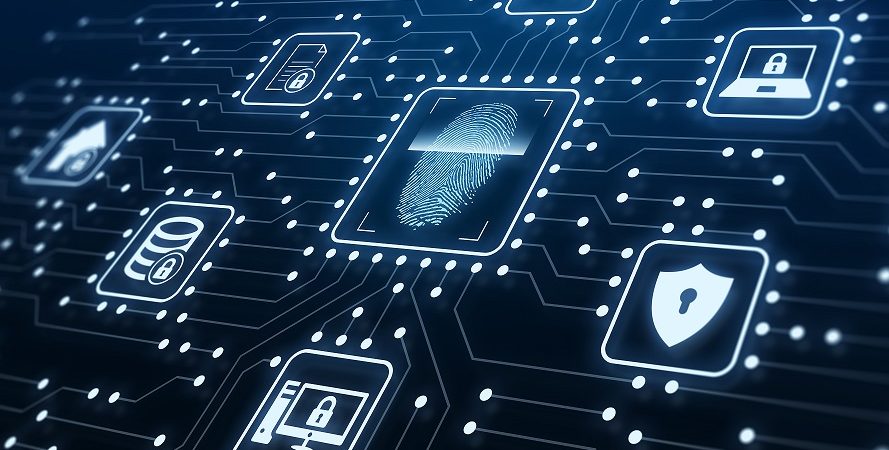Gartner, a technological research firm, recently presented seven security trends for this year and showed, at the center of its model, how every organization is expanding digitally with the standardization of hybrid work and how this is making centralized cybersecurity control obsolete.
The extensive digitization of processes in the digital supply chain has made it a target for ransomware attacks, especially concerning vulnerabilities to embedded systems.
These variables point to a shift in IT leaders from technology experts to corporate strategists who manage cyber-risks. Gartner lists seven vulnerabilities that will dominate the digital environment in this and coming years:
- Expansion of the attack surface: According to Gartner, remote work will leave 18% of experts working from home
- Identity system defense: Criminals are increasingly exploiting the misuse of credentials to access networks and achieve their goals
- Digital supply chain risks: Gartner predicts that by 2025, 45% of organizations worldwide will experience attacks on their supply chain management software
- Manufacturer consolidation: Security products are converging and manufacturers are consolidating security functions within single platforms, in addition to introducing sales and licensing options to make product bundles more attractive
- Cybersecurity mesh: It is a new concept in security architecture that enables enterprises to deploy and integrate security into their assets, wherever they are
- Distributed decisions: To support business priorities, IT leaders need to operate in a fast and agile manner, in decentralized locations enabling timely decisions
- Beyond knowledge: Progressive organizations are going beyond outdated compliance-based awareness campaigns and investing in holistic behavioral and culture change programs designed to bring safer ways of working
On the following pages, we ask three experts what companies need to do to improve their cybersecurity.
Ignacio Triana, Technical Leader for MCA, Trend Micro

In recent years, the technology teams of all companies have become essential to the development and growth of organizations since they drive strategies to achieve a faster evolution and provide more services for end-users.
It undoubtedly leads to decisions aiming at agility, security and availability. The challenge for decision-makers such as CIOs is to keep the three criteria aligned.
Based on the principles of agility and availability, cloud is considered the means to offer the possibility of on-demand and flexible growth when requested by the customer or the business.
On the other hand, security has evolved from a concept of protecting to being cyber-resilient. What does it mean? This term says that the possibility of a company suffering an attack is very high and inevitable, so the strategy must focus on early detection, mitigating them in their early stages and thus reducing the impact on the business.
Once you understand the importance of being cyber-resilient and committed to security, you must see and understand what is happening in the infrastructure. However, recent studies indicate that out of 2,000 companies surveyed globally, 27% waste time dealing with false positives.
How can the security team, which is crucial to a CIO, be helped? We cannot avoid relying on technology. I highlight the XDR solutions, which analyze information from different security controls, giving context to this information and details that allow a SOC to focus on alerts with better context and with greater accuracy.
Last but not least, it is essential to define and know the company’s risk level. It is only possible if the visibility aspect is achieved because it will provide knowledge of the attack surface and consequently provide a level of risk with which better decisions can be made and prioritized.
Claudio Martinelli, General Manager for Latin America and the Caribbean, Kaspersky

The world is undoubtedly ultra-connected now, especially driven by the Industrial Revolution 4.0. It makes connectivity the basis for great opportunities and severe vulnerabilities, whether in conventional businesses, the industrial sector or critical infrastructure.
As a result, attackers are constantly aware of the latest trends and technologies to create as many victims as possible. Attacks have gone from basic and widespread to more complex and targeted, suggesting that cybercriminals constantly improve tactics and procedures.
This scenario requires a new approach by CIOs to deal with cyberthreats and at Kaspersky, we believe that the most efficient solution to this challenge is the security by design approach or ‘cyber-immunity’.
It means the inclusion of security mechanisms from the earliest stage of the conception of a device to make the cost of carrying out a successful attack always greater than any potential benefit that cybercriminals may have from it.
Having a proactive cybersecurity strategy is crucial to protect any business or organization because a single cyberattack can cause catastrophic consequences, such as halting business operations, exposing confidential information and causing a loss of confidence among investors and customers.
A Kaspersky study indicates that only 48% of companies in Colombia adopted new policies or additional requirements to improve digital security after suffering an incident. Curiously, 9% of Colombian companies that had suffered a successful cyberattack did nothing to prevent future attacks.
In addition, although having the best security and best practices is crucial, training people within a company is essential. Otherwise, the organization will always have a weak point that will make it vulnerable to any attack.
It is also advisable that CIOs invest in threat intelligence to anticipate, isolate and prevent any attack. In this way, they will be one step ahead of the criminals and access threat information already present in other parts of the world or market segments. To invest in intelligence saves budget and directs training and cybersecurity efforts in the right direction.
On the other hand, unfortunately, many companies do not see cybersecurity as an investment and look to buy the cheapest option without considering the most efficient type of protection for their needs.
Daniel Rojas, Marketing Director LATAM, BlueVoyant

One of the most significant changes we are following in the market is that CIOs, who used to focus on protecting their network, are now also focusing on external risks. These external risks come as compromised vendors and supply chain organizations access the customer network.
CIOs are seeing that they need to worry about threats indirectly posed through their supply chain and attacks directly aimed at them by criminal organizations. As internal security becomes more secure, third parties are often the weak link.
According to a recent global survey of security leaders conducted by BlueVoyant, 97% of companies have been adversely affected by a cybersecurity breach in their supply chain.
One possible reason is concerning the third-party risk, considering that 47% of respondents said they audited or reported on supplier security no more than twice a year. The respondents who said they practiced continuous monitoring were only 0.5%.
The best practice is to continuously monitor the organization’s supply chain to respond immediately to any threats.
In addition, CIOs should start looking beyond even their external ecosystem to gain a real-time view of digital threats that could negatively affect their brand.
Furthermore, brand protection is the process of helping and protecting the intellectual property (IP) of companies and their associated brands against all types of cybercriminals, such as hackers or fraudsters.
It also includes defending customer data against theft. This protection happens through continuous monitoring of domains and websites, social networks, the applications in the official and unofficial app stores, the Deep and Dark Web, instant messaging and open- source. Once monitoring is implemented, vulnerabilities must be mitigated quickly and effectively.
IBM’s Cost of a Data Breach 2021 Report revealed that organizations affected by data breaches suffered about US$4.24 million in damages, up from US$3.86 million just a year earlier. The breaches resulting from phishing scams cost about US$4.65 million, underscoring the potential severity of phishing attacks that leverage corporate brand assets.
Click below to share this article

